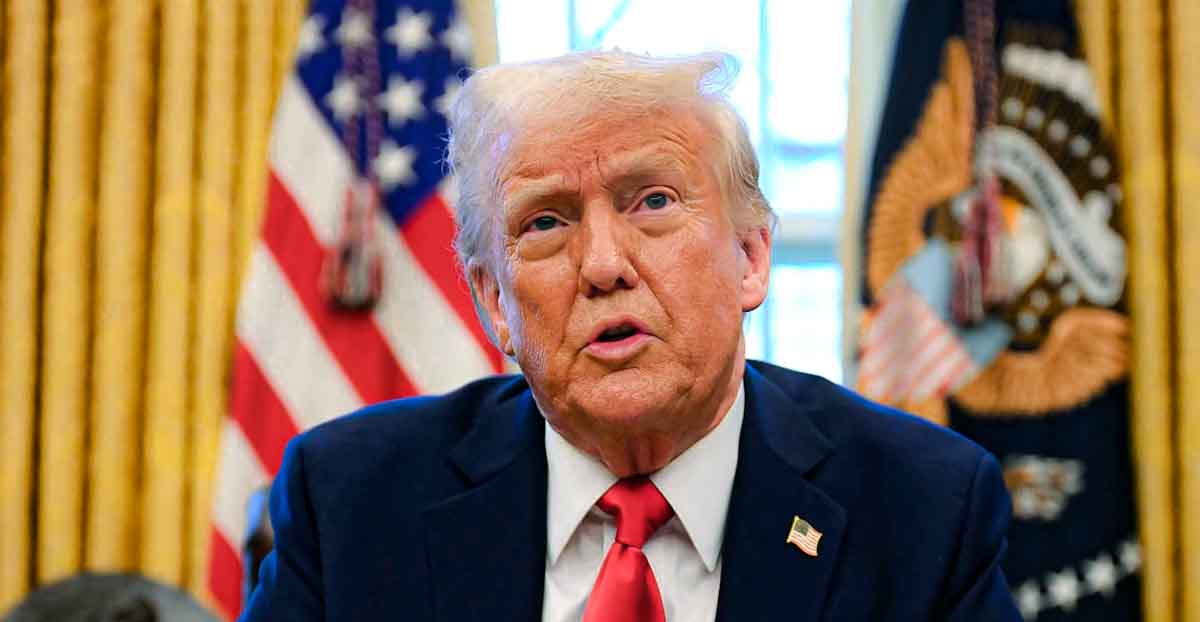Economic Policies:
Trump’s economic strategy focuses on revitalizing American industries and creating jobs. He implemented significant tax reforms, notably the Tax Cuts and Jobs Act of 2017, which reduced the corporate tax rate to stimulate business investment and economic growth.
Additionally, he imposed tariffs on imported goods, particularly from China, to protect American manufacturers and address trade imbalances.
These measures align with his “America First” philosophy, aiming to strengthen the U.S. economy by encouraging domestic production and reducing reliance on foreign imports.
Trump X Post:
- He who saves his Country does not violate any Law.
— Donald J. Trump (@realDonaldTrump) February 15, 2025
Trade Policies:
Under Trump’s leadership, the United States renegotiated several trade agreements to better serve American interests.
The United States-Mexico-Canada Agreement (USMCA) replaced the North American Free Trade Agreement (NAFTA), introducing provisions intended to benefit American workers and industries.
Trump’s administration also engaged in trade negotiations with the European Union and other nations, seeking fairer terms and addressing issues such as intellectual property rights and market access.
Immigration and Border Security:
A cornerstone of Trump’s pro-America stance is his commitment to strengthening border security and reforming immigration policies. He advocated for the construction of a border wall along the U.S.-Mexico border to prevent illegal immigration and enhance national security.
His administration implemented stricter immigration enforcement measures and sought to reform the legal immigration system to prioritize skilled workers and protect American jobs.
Foreign Policy:
Trump’s foreign policy approach is characterized by a focus on national interests and skepticism toward multilateral agreements that he perceives as unfavorable to the U.S. He withdrew the United States from several international agreements, including the Paris Climate Accord and the Iran nuclear deal, arguing that these agreements did not serve American interests.
His administration also increased defense spending to strengthen the military and asserted a more assertive stance in international relations, aiming to ensure that other nations contribute more to global security.
Nationalism and Sovereignty:
Central to Trump’s pro-America agenda is a strong sense of nationalism and a commitment to American sovereignty. He frequently emphasized the importance of putting American citizens first and restoring pride in the nation’s heritage.
This perspective is evident in his “America First” rhetoric, which advocates for policies that prioritize the well-being and interests of the American people over international considerations.
Critiques and Challenges:
While Trump’s pro-America policies have garnered significant support, they have also faced criticism. Critics argue that his protectionist trade policies could lead to trade wars and higher consumer prices.
His immigration policies have been contentious, with debates over their humanitarian impact and effectiveness. Additionally, his approach to international relations has been viewed by some as isolationist, potentially undermining traditional alliances and global cooperation.
How has Trump’s ‘America First’ approach reshaped U.S. policies?:
Donald Trump’s pro-America agenda reflects a commitment to prioritizing the nation’s interests across various policy areas. His “America First” approach has reshaped U.S. economic, trade, immigration, and foreign policies, aiming to strengthen the country and assert its position on the global stage.
While his policies have sparked debate, they underscore a significant shift in American political discourse toward nationalism and a focus on national sovereignty.
